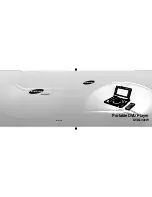
FUEL SYSTEM
FUEL REQUIREMENTS
This Stationary Emergency Generator is equipped with one of the
following fuel systems:
Natural gas fuel system
•
Propane vapor (PV) fuel system
•
PV/NG dual fuel system
•
Recommended fuels should have a Btu content of at least 1,000
Btus per cubic foot for natural gas; or at least 2,520 Btus per
cubic foot for LP gas. Ask the fuel supplier for the Btu content of
the fuel.
Required fuel pressure for natural gas and liquid propane is five
inches to 14 inches water column (0.18 to 0.5 psi).
NOTE:
Any piping used to connect the generator to the fuel supply
should be of adequate size to ensure the fuel pressure NEVER
drops below five inches water column for natural gas or liquid
propane for all load ranges.
NOTE:
It is the responsibility of the installer to make sure that only
the correct recommended fuel is supplied to the generator fuel
system. Thereafter, the owner/operator must make certain that
only the proper fuel is supplied.
NATURAL GAS FUEL SYSTEM
Natural gas is supplied in its vapor state. In most cases, the gas
distribution company provides piping from the main gas distribu-
tion line to the standby generator site. The following information
applies to natural gas fuel systems.
Gas pressure in a building is usually regulated by national, state
•
and local codes.
To reduce gas pressure to a safe level before the gas enters a
•
building, a primary regulator is needed. The natural gas supplier
may or may not supply such a regulator.
It is the responsibility of the gas supplier to make sure sufficient
•
gas pressure is available to operate the primary regulator.
Gas pressure at the inlet to the fuel shutoff solenoid should
•
not exceed approximately 14 inches water column (0.5 psi).
Optimum pressure at the fuel shutoff solenoid is 11 inches
water column (0.4 psi).
PROPANE VAPOR WITHDRAWAL FUEL SYSTEM
This type of system utilizes the vapors formed above the liquid
fuel in the supply tank. Approximately 10 to 20 percent of the tank
capacity is needed for fuel expansion from the liquid to the vapor
state. The vapor withdrawal system is generally best suited for
smaller engines that require less fuel. The installer should be aware
of the following:
The natural gas and LPV gas systems are similar. However, the
•
natural gas system delivers gas at a pressure of approximately
five inches water column to the carburetor.
When ambient temperatures are low and engine fuel consump-
•
tion is high, the vapor withdrawal system may not function
efficiently.
Ambient temperatures around the supply tank must be high
•
enough to sustain adequate vaporization, or the system will not
deliver the needed fuel volume.
In addition to the cooling effects of ambient air, the vaporization
•
process itself provides an additional cooling effect.
NOTE:
The door on the fuel tank MUST be properly closed for generator
to operate (Figure 5.1).
Figure 5.1
Fuel Tank Door Properly Closed
LOW FUEL LEVEL ALARM
This Stationary Emergency Generator is equipped with a low fuel
level alarm when propane vapor is used. When the fuel level in the
propane tank gets low, an alarm will sound to notify operator.
FLUID SPILL ALARM
This alarm notifies the operator when there is a spill inside the
enclosure, i.e. coolant, oil.
5-1
FuelSys004 R
ev.
D 07/09
Fuel System
Содержание 005230-0
Страница 32: ......
Страница 34: ......
Страница 36: ......
Страница 38: ......
Страница 40: ......
Страница 42: ......
Страница 44: ......
Страница 46: ......
Страница 48: ......
Страница 50: ......
Страница 52: ......
Страница 53: ......
Страница 54: ......
Страница 56: ......
Страница 58: ......
Страница 60: ......
Страница 62: ......
Страница 64: ......
Страница 66: ......
Страница 68: ......
Страница 70: ......
Страница 72: ......
Страница 74: ......
Страница 75: ......
Страница 76: ......
Страница 77: ......
Страница 78: ......
Страница 79: ......
Страница 80: ......
Страница 81: ......
Страница 82: ......
Страница 83: ......
Страница 84: ......
Страница 85: ......
Страница 86: ...Notes ...
Страница 87: ...Notes ...










































